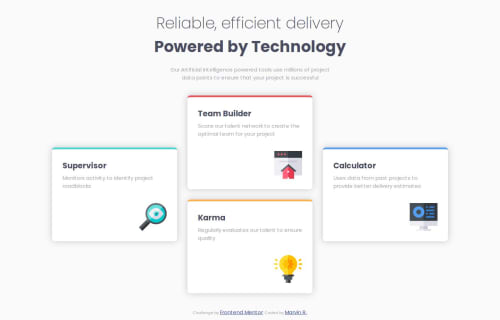Beginner Flexbox Four Cards Component

Solution retrospective
I'm proud that my solution seems pretty spot-on. However, I think my code is a little disorganized since I'm still learning flexbox. As I continue to learn flexbox's properties, I believe I'll be able to more elegantly and efficiently code these front end sites.
What challenges did you encounter, and how did you overcome them?I still don't perfectly understand certain flexbox properties. For example, flex-basis is still a fuzzy concept for me. It's the default size of an element based on what? When does it shrink/grow from that size.
What specific areas of your project would you like help with?I would like to know if I used flexbox efficiently. Sometimes it feels like I'm abusing flexbox, but I'm struggling to my head around other methods that could better position my elements.
Please log in to post a comment
Log in with GitHubCommunity feedback
No feedback yet. Be the first to give feedback on Marvin's solution.
Join our Discord community
Join thousands of Frontend Mentor community members taking the challenges, sharing resources, helping each other, and chatting about all things front-end!
Join our Discord